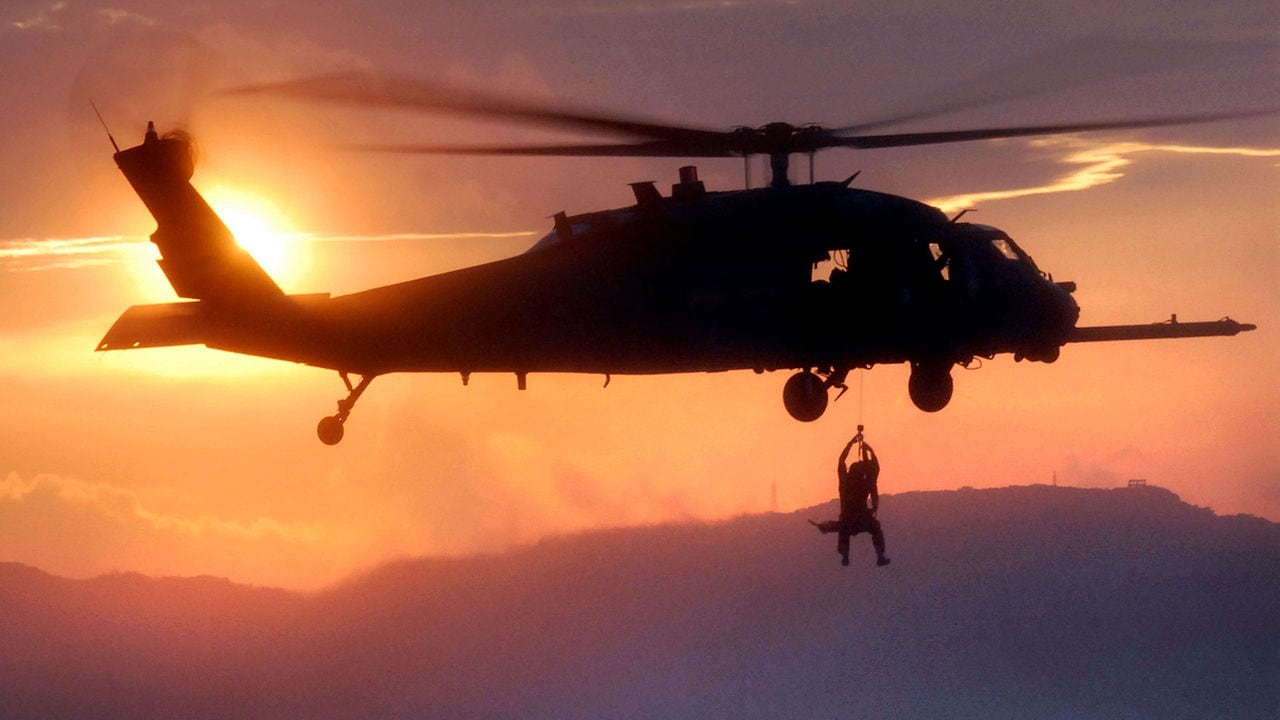One of the mainstays of the U.S. Armed Forces arsenal of helicopters has been the Sikorsky UH-60 Blackhawk. In one form or another, the Blackhawk has been in service with the U.S. Army since 1979 – replacing the Bell UH-1H Iroquois (Huey) tactical transport chopper along the way – and out of more than 4,000 Blackhawk aircraft of all types in service worldwide today, the Army is the largest owner with 2,135 H-60 designated aircraft.
However, a variant of the Blackhawk has also performed vital missions for the U.S. Air Force. Say hello to the MH-60G/HH-60G Pave Hawk helicopter.
Pave Hawk History and Specifications
The original Blackhawk made her maiden flight on October 17, 1974, five years before actually entering Army service. The Pave Hawk rendition debuted in 1982. All versions were manufactured by the Sikorsky Aircraft Corporation – now a part of Lockheed Martin – founded in 1923 by one of the giants of the helicopter-building industry, the Russian-American aviation pioneer Igor Sikorsky.
The official U.S. Air Force fact sheet elaborates on what distinguishes the Pave Hawk from the Blackhawk: “(A)n upgraded communications and navigation suite that includes integrated inertial navigation/global positioning/Doppler navigation systems, satellite communications, secure voice, and Have Quick communications…All HH-60Gs have an automatic flight control system, night vision goggles with lighting and forward looking infrared system that greatly enhances night low-level operations. Additionally, Pave Hawks have color weather radar and an engine/rotor blade anti-ice system that gives the HH-60G an adverse weather capability.”
Additional (proverbial) bells and whistles include retractable in-flight refueling probe, internal auxiliary fuel tanks, two crew-served 7.62mm or .50 caliber machine guns, and an 8,000-pound capacity cargo hook, along with folding rotor blades to improve air transportability and shipboard operations.
“But wait, there’s more!” (as the old Ginsu knife commercial used to say) As in combat enhancements such as a radar warning receiver (TWT), infrared jammer, and a flare/chaff countermeasure dispensing system (just like you see on fixed-wing combat aircraft). Rescue equipment includes a hoist capable of lifting a 600-pound load from a hover height of 200 feet, and the AN/ARS-6 Personnel Locator that is compatible with the AN/PRC-112 survival radio and provides range and bearing information to a survivor’s location.
Last but not least, these whirlybirds/warbirds are equipped with an over-the-horizon tactical data receiver that is capable of receiving near real-time mission update information.
The Pave Hawks carry a four-person crew, consisting of a pilot, co-pilot, flight engineer, and door gunner, with a maximum carrying capacity of 6–12 troops, litters, and additional cargo, Fuselage length is 64 feet 10 inches, height is 16 feet 8 inches, empty weight is 16,000 pounds, and a maximum takeoff weight is 22,000 pounds, powered by two General Electric T700-GE-700 / -701C turboshaft engines producing 1,940 HP. Max airspeed is 193 knots (222 mph) whilst cruise speed is 159 knots (183 mph).
“That Others May Live”
Okay, both the MH-60G and the HH-60G carry the “Pave Low” sobriquet, so what’s the difference? Basically, the MH-60 version is primarily tasked with clandestine infiltration and exfiltration of elite “shooters & looters” (so to speak), whilst the HH-60 version is geared more toward combat search and rescue (CSAR), transporting the U.S. Air Force Special Operations Command’s (AFSOC’s) elite Pararescue Jumpers (“PJs”) – whose motto is “That Others May Live” and whose proud battle cry is a hearty “HOOYAH!” – for that purpose. Admittedly, there is some overlap with the concurrent missions performed by AFSOC’s MH-53 Pave Low chopper, but eh, it is what it is.
The latter version of the Pave Hawk can also be tasked to perform military operations other than war (MOOTW), including civil search and rescue, Medevac, disaster response, humanitarian assistance, security cooperation/aviation advisory, NASA space flight support, and rescue command and control (C2). “Flexibility is the key to airpower,” as the mantra goes, or to put a more humorous spin on it, “Semper Gumby (Always Flexible).”
Where Are They Now?
Unlike the Pave Low, the Pave Hawk remains very much in active service with the USAF. This venerable chopper has been involved in more U.S. military ops than you can shake a stick at, from Operation Just Cause in Panama in December 1989 to Operation Just Cause in 1991 – during which time, among other things, they provided emergency evacuation coverage for Navy SEAL teams penetrating the Kuwaiti coast before the invasion – to the Balkans campaigns to the Global War on Terror. Meanwhile, the Republic of Korea Air Force (ROKAF) employs its own version of the airframe, designated the HH-60P.
A total of 112 HH-60Gs have been built.
Christian D. Orr is a former Air Force Security Forces officer, Federal law enforcement officer, and private military contractor (with assignments worked in Iraq, the United Arab Emirates, Kosovo, Japan, Germany, and the Pentagon). Chris holds a B.A. in International Relations from the University of Southern California (USC) and an M.A. in Intelligence Studies (concentration in Terrorism Studies) from American Military University (AMU). He has also been published in The Daily Torch and The Journal of Intelligence and Cyber Security. Last but not least, he is a Companion of the Order of the Naval Order of the United States (NOUS). In his spare time, Chris enjoys shooting, dining out, cigars, Irish and British pubs, travel, USC Trojans college football, and Washington DC professional sports.

